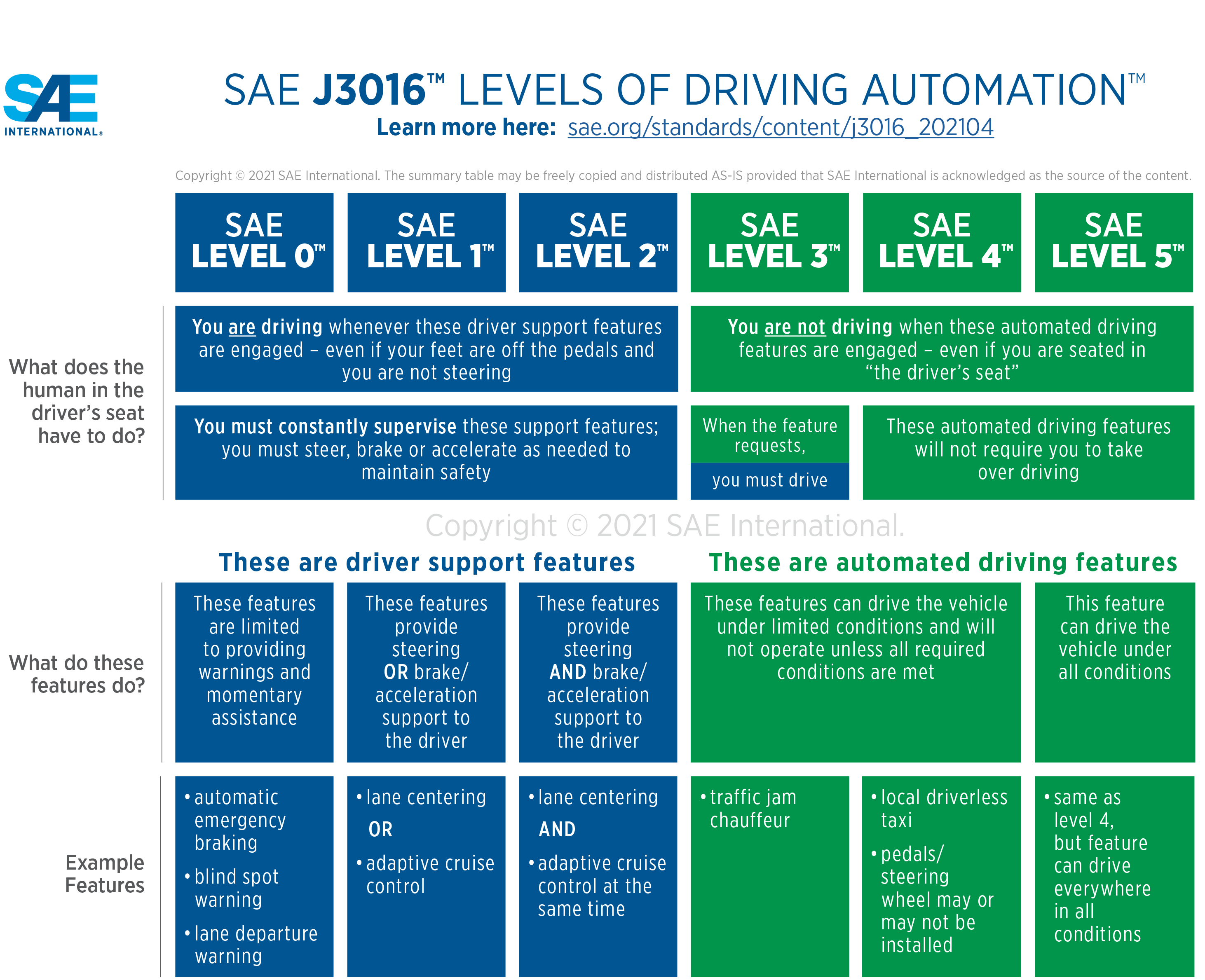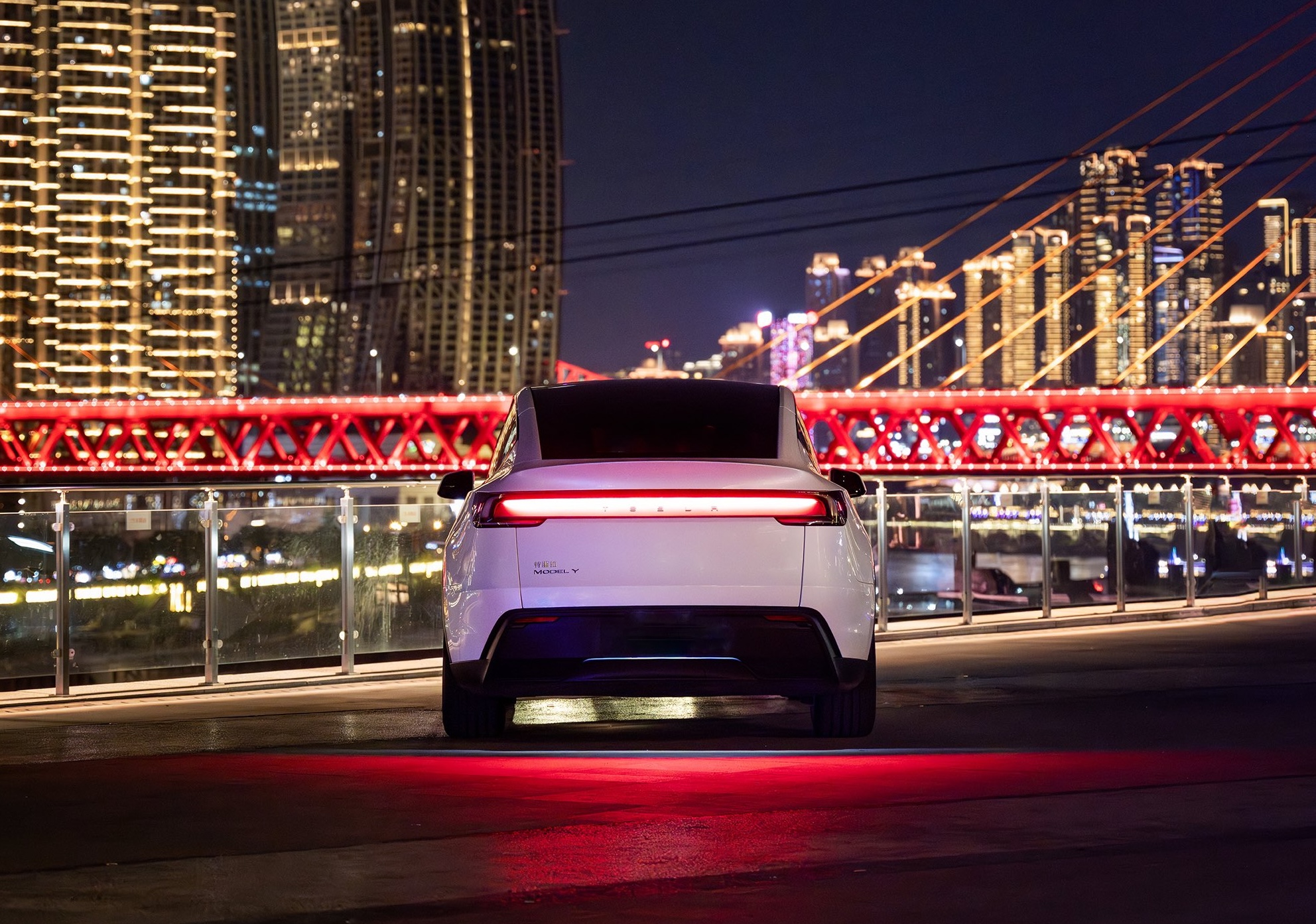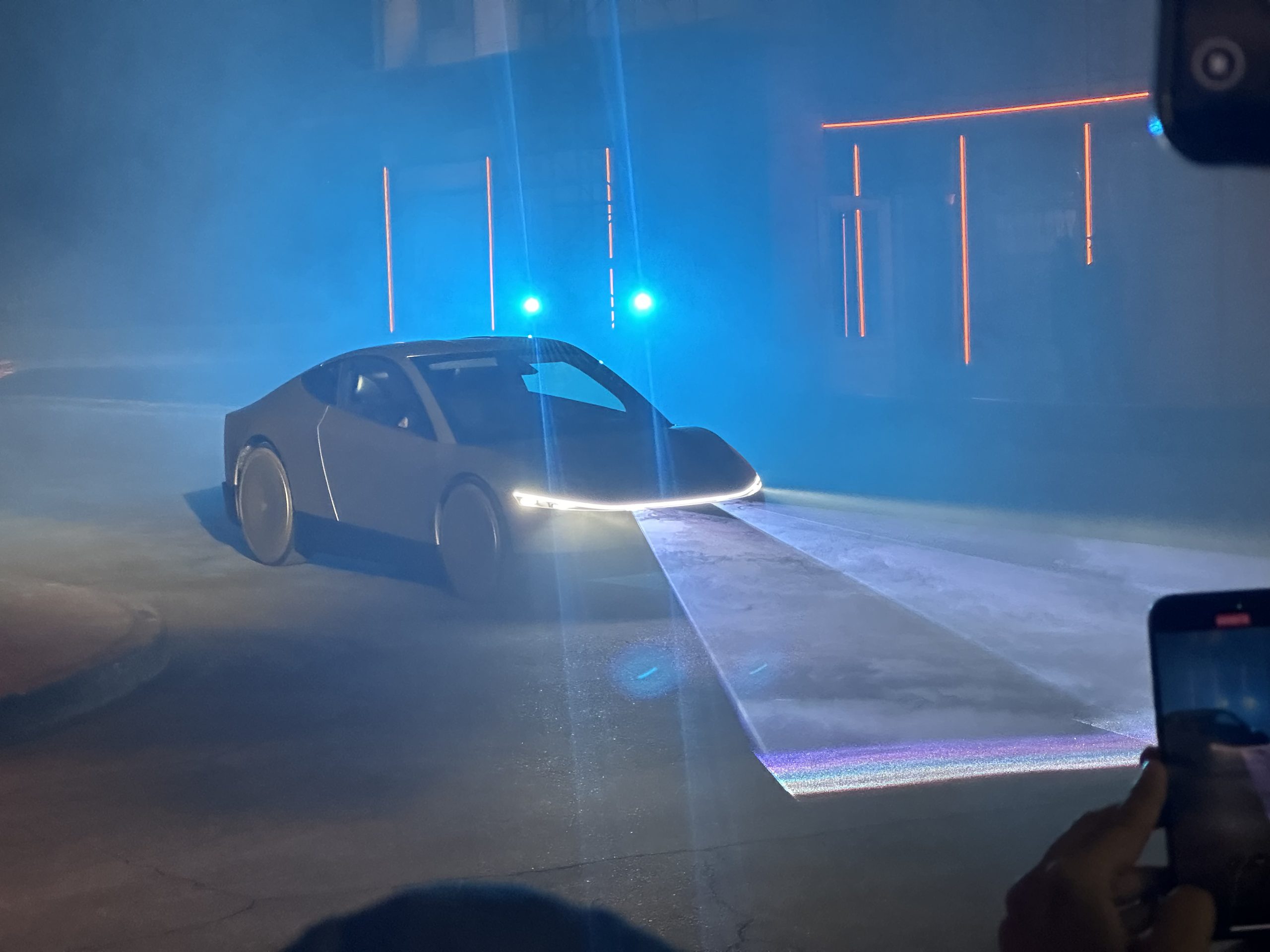Tesla and other companies are actively developing self-driving technologies and driverless ride-hailing platforms, and with President-elect Donald Trump’s transition team already focused on autonomous vehicles, the tech is highly expected to be a major theme in 2025.
According to a Reuters Breakingviews prediction report on Monday, Trump’s moves to minimize regulations surrounding autonomous vehicles and create a federal framework for the technology are expected to supercharge the industry—as increased competition emerges in the U.S. and beyond.
With Tesla CEO Elon Musk also set to play a large role in Trump’s administration, heading up the Department of Government Efficiency (DOGE), the company’s own developments in the sector could also stand to benefit substantially. Reuters also predicts that self-driving pilots could expand under the administration, especially as developers aim to increase the amount of data used to train their systems.
READ MORE ON SELF-DRIVING REGULATIONS: U.S. agency proposes rules for self-driving vehicle incident reporting
Last month, the Trump transition team said that it was already aiming to create a federal self-driving vehicle framework. Additionally, the team earlier this month was reported to be ditching federal requirements on automated driving tech crash reporting, coming as one example of the administration’s aims to streamline regulatory processes in the industry.
Internationally, the Society of Automotive Engineers (SAE) categorizes vehicle automation into five automation levels, which are generally adopted in conversations about robotaxis in the U.S. market as well. You can see these categories below, with Level 3 and above generally considered to be full automation, at least at times, while Level 2 and below are considered partial automation.
Credit: SAE International
According to the data firm Canalys, just 5.5 percent of vehicles sold this year have included Level 2 or more assistance features, such as cruise control and automated lane changes. By 2025, however, Citi research has suggested that models in China below 200,000 yuan (about $28,000) will have these features, playing a major role in consumer demand.
In China, at least 19 companies are currently testing fully autonomous vehicles, and Goldman Sachs expects the country to see as many as 90 percent of consumer sales to have features of Level 3 autonomy or greaterby 2040, compared to just 65 percent in the U.S.
While these technologies are emerging, McKinsey predicts that self-driving could become a $400 billion industry by 2035. Google parent company Alphabet runs Waymo, a Level 4 driverless ride-hailing service that already offers paid rides, while others, including Pony AI and Baidu also offer rentable self-driving vehicles in select areas.
BYD has invested $14 billion into self-driving, Toyota has around 1.7 trillion yen ($11.3 billion) going toward software, while Volkswagen has invested $700 million into China’s Xpeng Motors. Li Auto and Xiami are also considered potential competitors in these spaces, and 2025 could prove a big year for commercial self-driving hopefuls.
Tesla’s Supervised FSD program, Cybercab unveiled
Meanwhile, Tesla isn’t yet operating a paid ride-hailing service, though it gathers data through owner use of its Supervised Full Self-Driving (FSD) software. Tesla has touted the potential scalability of its Supervised FSD in the past, given that it’s available at least in some form in all of the company’s vehicles.
Musk has also regularly talked about a future in which owners of its vehicles could use an Unsupervised FSD to generate money by giving robotaxi rides while not normally in use.
On that theme, Tesla unveiled the Cybercab in October, a fully autonomous, two-seat vehicle with no pedals, set to eventually make it to the market as a driverless ride-hailing vehicle. It’s also set to be equipped with wireless charging and make use of an automated cleaning robot, offering top-to-bottom autonomy for owners.
MORE ON FSD SUPERVISED: Watch Tesla’s FSD v13.2 navigate away from park in a tricky situation
Tesla skeptics, Waymo’s driverless ride-hails, GM’s Cruise drives into the sunset
Despite the unveiling, some have shared skepticism around how long the vehicles could take to reach the market, especially given that production isn’t set to begin until 2026 with commercial deliveries aiming for “before 2027,” according to Musk during the October 10 “We, Robot” unveiling event.
On Monday, analyst Gary Black also predicted that fewer than 50 percent of Tesla owners would join the company’s robotaxi fleet, while a Guggenheim researcher in October said Tesla was “extremely unlikely” to reveal a credible path to robotaxi commercialization in the next 12 to 24 months.
Others like Waymo are some of the first companies operating paid driverless ride-hails, and the Google-run firm said in August that its robotaxis were already giving 100,000 paid self-driving rides per week. Meanwhile, General Motors (GM) announced this month that it will officially end funding for its commercial self-driving arm Cruise, after one of the company’s driverless vehicles last year ran over and pinned a pedestrian in San Francisco.
ALSO RELATED:
- Tesla China FSD approval expected by end of 2024: Musk
- Waymo to test self-driving vehicles in another country in 2025
What are your thoughts? Let me know at zach@teslarati.com, find me on X at @zacharyvisconti, or send us tips at tips@teslarati.com.
California regulators add new reporting requirements for self-driving cars
Need accessories for your Tesla? Check out the Teslarati Marketplace:
News
Tesla China breaks 8-month slump by selling 71,599 vehicles wholesale in June
Tesla China’s June numbers were released by the China Passenger Car Association (CPCA) on Tuesday.

Tesla China was able to sell 71,599 vehicles wholesale in June 2025, reversing eight consecutive months of year-over-year declines. The figure marks a 0.83% increase from the 71,599 vehicles sold wholesale in June 2024 and a 16.1% jump compared to the 61,662 vehicles sold wholesale in May.
Tesla China’s June numbers were released by the China Passenger Car Association (CPCA) on Tuesday.
Tesla China’s June results in focus
Tesla produces both the Model 3 and Model Y at its Shanghai Gigafactory, which serves as the company’s primary vehicle export hub. Earlier this year, Tesla initiated a changeover for its best-selling vehicle, the Model Y, resulting in a drop in vehicle sales during the first and second quarters.
Tesla’s second-quarter China sales totaled 191,720 units including exports. While these numbers represent a 6.8% year-over-year decline for Tesla China, Q2 did show sequential improvement, rising about 11% from Q1 2025, as noted in a CNEV Post report.
For the first half of the year, Tesla sold 364,474 vehicles wholesale. This represents a 14.6% drop compared to the 426,623 units sold wholesale in the first half of 2024.
China’s competitive local EV market
Tesla’s position in China is notable, especially as the new Model Y is gaining ground in the country’s BEV segment. That being said, Tesla is also facing competition from impressive local brands such as Xiaomi, whose new YU7 electric SUV is larger and more affordable than the Model Y.
The momentum of the YU7 is impressive, as the vehicle was able to secure 200,000 firm orders within three minutes and over 240,000 locked-in orders within 18 hours. Xiaomi’s previous model, the SU7 electric sedan, which is aimed at the Tesla Model 3, also remains popular, with June deliveries surpassing 25,000 units for the ninth straight month.
While China’s EV market is getting more competitive, Tesla’s new Model Y is also ramping its production and deliveries. Needless to say, Tesla China’s results for the remaining two quarters of 2025 will be very interesting.
Elon Musk
Tesla reveals it is using AI to make factories more sustainable: here’s how
Tesla is using AI in its Gigafactory Nevada factory to improve HVAC efficiency.

Tesla has revealed in its Extended Impact Report for 2024 that it is using Artificial Intelligence (AI) to enable its factories to be more sustainable. One example it used was its achievement of managing “the majority of the HVAC infrastructure at Gigafactory Nevada is now AI-controlled” last year.
In a commitment to becoming more efficient and making its production as eco-friendly as possible, Tesla has been working for years to find solutions to reduce energy consumption in its factories.
For example, in 2023, Tesla implemented optimization controls in the plastics and paint shops located at Gigafactory Texas, which increased the efficiency of natural gas consumption. Tesla plans to phase out natural gas use across its factories eventually, but for now, it prioritizes work to reduce emissions from that energy source specifically.
It also uses Hygrometric Control Logic for Air Handling Units at Giafactory Berlin, resulting in 17,000 MWh in energy savings each year. At Gigafactory Nevada, Tesla saves 9.5 GWh of energy through the use of N-Methylpyrrolidone refineries when extracting critical raw material.
Perhaps the most interesting way Tesla is conserving energy is through the use of AI at Gigafactory Nevada, as it describes its use of AI to reduce energy demand:
“In 2023, AI Control for HVAC was expanded from Nevada and Texas to now include our Berlin-Brandenburg and Fremont factories. AI Control policy enables HVAC systems within each factory to work together to process sensor data, model factory dynamics, and apply control actions that safely minimize the energy required to support production. In 2024, this system achieved two milestones: the majority of HVAC infrastructure at Gigafactory Nevada is now AI-controlled, reducing fan and thermal energy demand; and the AI algorithm was extended to manage entire chiller plants, creating a closed-loop control system that optimizes both chilled water consumption and the energy required for its generation, all while maintaining factory conditions.”
Tesla utilizes AI Control “primarily on systems that heat or cool critical factory production spaces and equipment.” AI Control communicates with the preexisting standard control logic of each system, and any issues can be resolved by quickly reverting back to standard control. There were none in 2024.
Tesla says that it is utilizing AI to drive impact at its factories, and it has proven to be a valuable tool in reducing energy consumption at one of its facilities.
Elon Musk
Tesla analysts believe Musk and Trump feud will pass
Tesla CEO Elon Musk and U.S. President Donald Trump’s feud shall pass, several bulls say.

Tesla analysts are breaking down the current feud between CEO Elon Musk and U.S. President Donald Trump, as the two continue to disagree on the “Big Beautiful Bill” and its impact on the country’s national debt.
Musk, who headed the Department of Government Efficiency (DOGE) under the Trump Administration, left his post in May. Soon thereafter, he and President Trump entered a very public and verbal disagreement, where things turned sour. They reconciled to an extent, and things seemed to be in the past.
However, the second disagreement between the two started on Monday, as Musk continued to push back on the “Big Beautiful Bill” that the Trump administration is attempting to sign into law. It would, by Musk’s estimation, increase spending and reverse the work DOGE did to trim the deficit.
Every member of Congress who campaigned on reducing government spending and then immediately voted for the biggest debt increase in history should hang their head in shame!
And they will lose their primary next year if it is the last thing I do on this Earth.
— Elon Musk (@elonmusk) June 30, 2025
President Trump has hinted that DOGE could be “the monster” that “eats Elon,” threatening to end the subsidies that SpaceX and Tesla receive. Musk has not been opposed to ending government subsidies for companies, including his own, as long as they are all abolished.
How Tesla could benefit from the ‘Big Beautiful Bill’ that axes EV subsidies
Despite this contentious back-and-forth between the two, analysts are sharing their opinions now, and a few of the more bullish Tesla observers are convinced that this feud will pass, Trump and Musk will resolve their differences as they have before, and things will return to normal.
ARK Invest’s Cathie Wood said this morning that the feud between Musk and Trump is another example of “this too shall pass:”
BREAKING: CATHIE WOOD SAYS — ELON AND TRUMP FEUD “WILL PASS” 👀 $TSLA
She remains bullish ! pic.twitter.com/w5rW2gfCkx
— TheSonOfWalkley (@TheSonOfWalkley) July 1, 2025
Additionally, Wedbush’s Dan Ives, in a note to investors this morning, said that the situation “will settle:”
“We believe this situation will settle and at the end of the day Musk needs Trump and Trump needs Musk given the AI Arms Race going on between the US and China. The jabs between Musk and Trump will continue as the Budget rolls through Congress but Tesla investors want Musk to focus on driving Tesla and stop this political angle…which has turned into a life of its own in a roller coaster ride since the November elections.”
Tesla shares are down about 5 percent at 3:10 p.m. on the East Coast.
-

 Elon Musk2 days ago
Elon Musk2 days agoTesla investors will be shocked by Jim Cramer’s latest assessment
-

 News7 days ago
News7 days agoTesla Robotaxi’s biggest challenge seems to be this one thing
-

 News2 weeks ago
News2 weeks agoTesla’s Grok integration will be more realistic with this cool feature
-

 Elon Musk2 weeks ago
Elon Musk2 weeks agoElon Musk slams Bloomberg’s shocking xAI cash burn claims
-

 News2 weeks ago
News2 weeks agoTesla China roars back with highest vehicle registrations this Q2 so far
-

 News2 weeks ago
News2 weeks agoTexas lawmakers urge Tesla to delay Austin robotaxi launch to September
-

 News2 weeks ago
News2 weeks agoTesla dominates Cars.com’s Made in America Index with clean sweep
-

 Elon Musk1 week ago
Elon Musk1 week agoFirst Look at Tesla’s Robotaxi App: features, design, and more


















